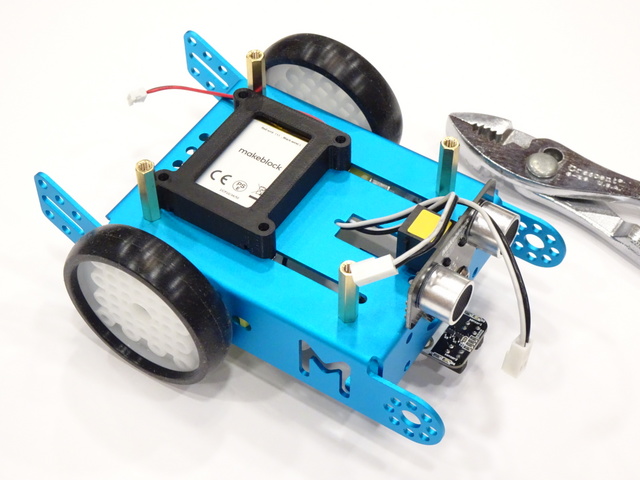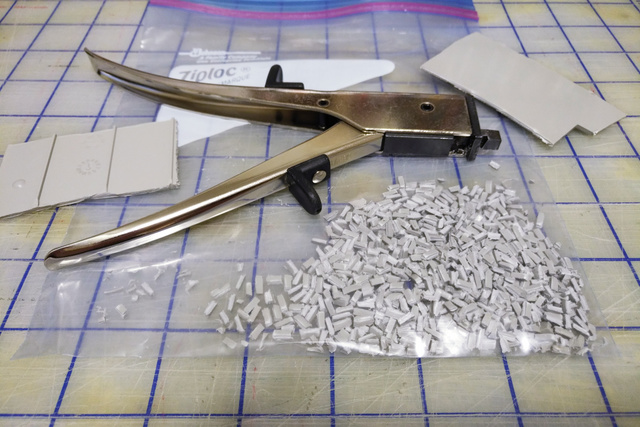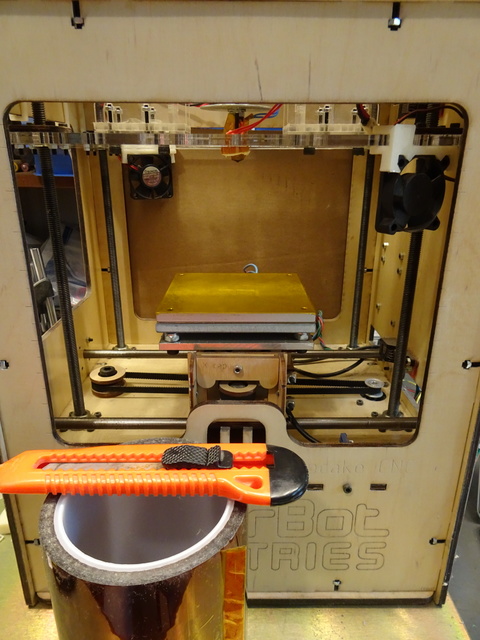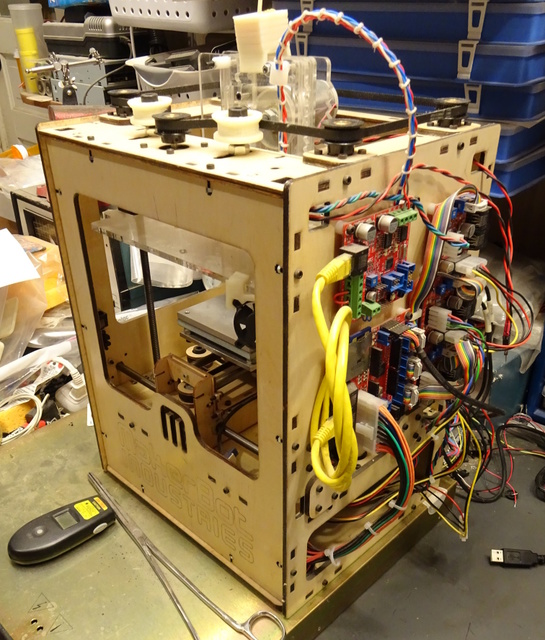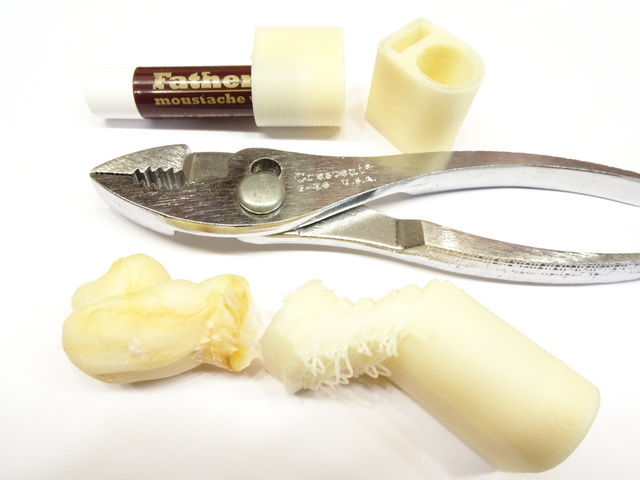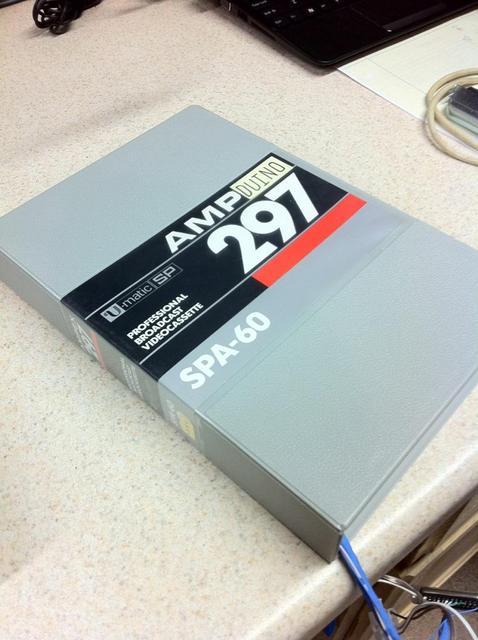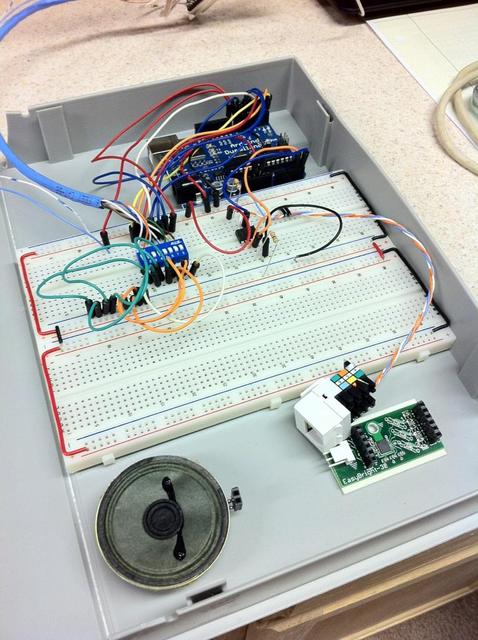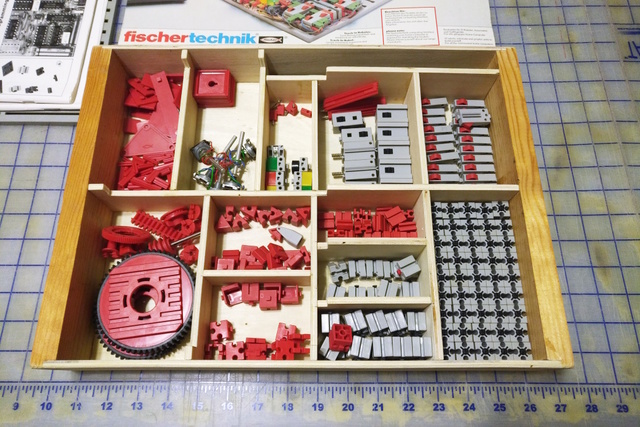I’ve just found this post I had started drafting in December 2013 and hadn’t finished. The remarks about reliability and long periods of disuse are still pertinent — this was one month before the last time I attempted to use it — as is the dust solution.
In the four and a half years I’ve owned my MakerBot CupCake 3D printer, I’ve never had it working well enough to use for more than a week or two at a time. My real frustration has been a lack of understanding what has failed and how to fix it, so much so that it’s been almost two years since I most recently gave up and put it away. [Written in December 2013, and I haven't used it since January 2014.] I know there are newer, more reliable printers on the market; but it sure seems like it should be possible to get the CupCake to work reliably, if I’m willing to upgrade critical parts.
In the intervening time [meaning 2011 to 2013], my friend Joel has run some prints for me on his Thing-O-Matic. Recently while chatting over a print in progress and checking whether the filament was jammed (solution: his build platform’s aluminum heat spreader was bolted tightly around all the edges, expanding when hot, bulging up in the middle progressively over an afternoon of attempted printing, and blocking the nozzle which was enough to jam things up), he mentioned that his nozzle had jammed to the point that he couldn’t even push filament through by hand with pliers (yes, my problem exactly) and that he had solved it (oh???).
Dust.
Joel had disassembled his extruder and lightly drilled most of the filament out of his clogged nozzle with an undersized bit, as I had in the past; then soaked out the rest of the plastic with acetone, as I had also. But when removing the clogged filament, Joel noticed it was quite dirty and made the mental connection with dust on the filament. When he reassembled, he added a toothbrush to wipe dust off the filament on its way in and has also made a point to keep his supply bagged and/or boxed. Since then (and until the expanding heat spreader), he’s had no further troubles with clogging.
This is not a new issue, but I had never heard anyone indicate it had so completely jammed their nozzles that their extruder wouldn’t extrude.
And it fixed my CupCake. Mostly. For a while.
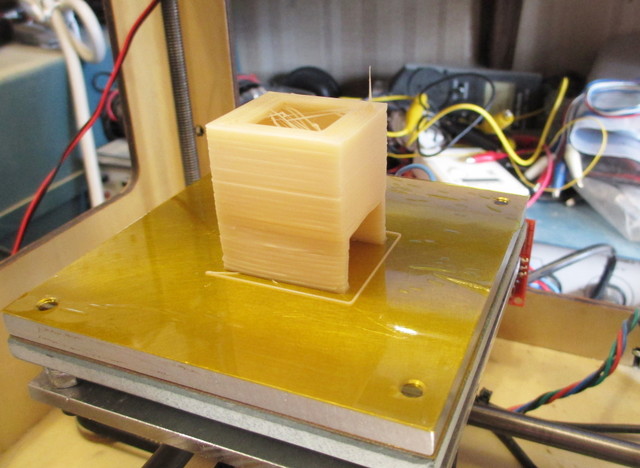
Read the rest of this entry »
